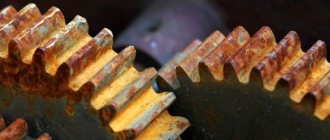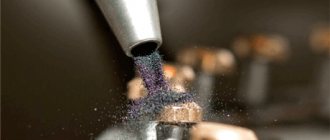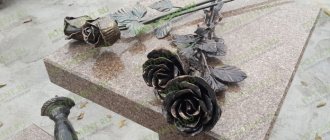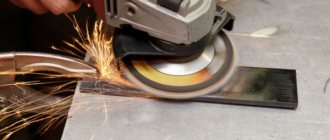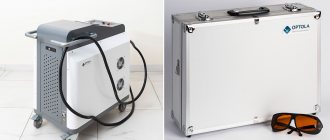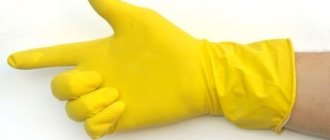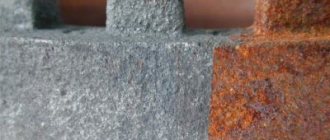Today, sheet metal is used to make products in various industries. Sheet metal is not always in perfect, ready-to-use condition; it may have burrs, stains, rust and other defects that must be eliminated before using the products. Removal of burrs and other imperfections using automated equipment or hand tools. Automatic devices are becoming increasingly popular and are produced in various configurations, taking into account their specifics. This article will help you understand the work process and choose the most appropriate equipment or tool.
With so much choice, it's obvious to think about how to choose the most suitable sheet metal stripping equipment. However, answering such questions can be difficult unless there is an understanding of the type of surface defects and the available sheet metal cleaning techniques.
Comprehensive anti-corrosion treatment of metal structures includes the following services:
- assessment of the condition of metal structures and the degree of corrosion damage;
- drawing up a processing project;
- cleaning rust by sandblasting;
- treatment with anti-corrosion compounds;
- final weather-resistant, fire-retardant or decorative painting;
- handing over the object to the receiving committee;
- preparation of technical documentation.
We professionally clean metal structures of any complexity from contamination using our own equipment in a workshop in Moscow, or on-site throughout Russia!
The main direction of our activity is professional fire protection of metal structures. We have treated and protected more than 500 objects from fire!
Chemical cleaning methods
[context]
Washing
Water-based products with the addition of alkali, surfactants or organic solvents - used for degreasing, removing varnishes and old paints.
Electrochemical etching, electrolytic and electrolyte-plasma cleaning
Used to degrease surfaces, remove oxides and scale. Used primarily in rolling production.
Salt baths
Cleaning the metal surface from scale, graphite, sand before soldering or application.
We offer reasonable prices for rust removal and subsequent treatment
How much it costs to remove rust depends on the following conditions:
- workload;
- degree of damage to metal structures by corrosion;
- the degree of metal purification required according to the standard, depending on the purpose of the structure and its operating conditions;
- the presence of technical difficulties - complex configuration of structures, hard-to-reach areas, the need for high-altitude work.
The price of a full processing complex consists of several components:
- the price of stripping metal from rust, scale, dirt, etc.;
- price of anti-corrosion treatment;
- the cost of applying decorative, fire-retardant and other paint and varnish coatings;
- Cost of materials;
- the cost of their delivery.
Thus, the total order amount is also affected by the price of processing materials. We have direct supplies of paints and varnishes from leading market manufacturers. This part of the cost costs us and our clients an average of 15% less.
Estimated cost of metal sandblasting
| Name | Unit. | Price |
| Cleaning metal from corrosion | PC | 150r |
| Sandblasting stainless steel | PC | 180rub |
| Sandblasting aluminum | PC | 200rub |
| Sandblasting sheet metal | PC | 180rub |
| Sandblasting metal grating from corrosion (rust) | PC | 250rub |
The final cost is reflected in the contract. Our specialist will answer you in more detail, call: 8 (495) 150-5-987. We will provide absolutely free consultation and answer all your questions.
Using a stripping machine
An automatic machine for cleaning and deburring is a device that processes sheet metal products using special tools: sandpaper, brush modules. The Costa Levigatrici company produces wet and dry cleaning devices for removing burrs and burrs, grinding and polishing products using brush modules.
Removing rust from metal by sandblasting has a number of advantages compared to other technologies.
- high speed and productivity;
- universality - the method is suitable for any structures, including those with complex configurations, for which other technologies are ineffective (and sometimes impossible). The operating parameters of the sandblasting machine can be adjusted;
- high quality processing;
- there is no need to use toxic chemical compounds;
- affordable price;
- the abrasive jet forms a slight roughness on the cleaned surface, which improves adhesion to paintwork materials.
Requirements for cleaning the surface of metals and alloys before welding
Cleaning before welding is necessary primarily to obtain a high-quality weld and prevent the appearance of defects. Remove preservatives, dirt, rust and oxide films from the surface of metals. Clean the outside of the connection. The inner side is processed when using through-penetration technology.
There are the following requirements for the width of the cleaning radius of the surface of parts (in both directions from the future seam):
- not less than 5 mm - for welding butt joints using arc, laser, electron beam, contact flash welding with a nominal thickness of parts up to 5 mm;
- not less than the nominal thickness of the part - for welding butt joints using arc, laser, electron beam, contact flash welding with a nominal thickness of parts from 5 to 20 mm;
- not less than 50 mm for making welded joints using electroslag welding;
- not less than 5 mm - for corner, T-type, lap joints and welding of pipes into tube sheets, performed by arc, laser, electron beam welding.
Cleaned metal surfaces should be free of rust, scale, oil and other contaminants. The presence of cracks, delaminations and sunsets is not acceptable. Double-layer steels should not have delamination of the corrosion layer.
First of all, the metal surface is checked visually, and if the metal thickness is more than 36 mm, the area adjacent to the cleaned surfaces should be checked using the ultrasonic method. Ultrasonic testing is carried out over a width of at least 50 mm to detect defects such as cracks, delaminations, etc. Defects with an area of more than 1 square meter are considered unacceptable. m. with the sensitivity of ultrasonic testing D5E. No more than 3 defects are allowed per 1 m of the length of the controlled surface with a distance between them of at least 100 mm.
The cutting surface of the edges must be cleaned of traces of cutting and marking. Parts that will be welded after thermal cutting must be processed to a thickness of 2-3 mm. Pre-cleaning is carried out by mechanical and/or chemical methods, and final cleaning, depending on the metal being welded, the degree of initial and required roughness, is carried out by various physical and chemical methods (etching, exposure to a glow discharge, electropolishing, etc.) and scraping. Immediately before performing welding work, the exterior of the parts to be welded in the joint area (if possible, through the gap in the joint) is cleaned with a low-power source of welding heating, without melting the joint.
Requirements for the roughness of the cleaned surfaces of the contacting edges of parts for arc and plasma welding should be no more than Ra=12.5 µm (Rz=80 µm), for electron beam and laser welding - Rz≤30 µm.
To correctly assess the degree of surface roughness, comparison with certified samples, profilographs, profilometers and other measuring instruments are used.
Purity testing is carried out by direct and indirect methods. The first help to identify contamination on the surface. The microscopic method based on wettability and the method based on potential difference have become widespread. The method using radioactive isotopes has high sensitivity. Indirect methods are used mainly in laboratory conditions and are based on removing the contaminated layer from the surface in special etching mixtures. In production, among indirect methods, only measuring the resistance of washing solutions is used.
The technology for cleaning surfaces from corrosion is regulated by the following documents:
- GOST 9.402-2004, as well as GOST R ISO 8501-1-2014, stipulate standards for the preparation of metal surfaces for applying paints and varnishes;
- SP 72.13330-2016 contains requirements for corrosion protection of building structures;
- SP 16 13330-2011 – protection of steel structures.
Standards distinguish several degrees of corrosion damage to metal;
- A – no rust;
- B – present in small quantities;
- C – present in large quantities;
- D – up to 90% of the surface is affected by rust.
Russian and international standards provide several degrees of metal purification, depending on the type of metal structure, subsequent processing technology, and operating conditions. Cleaning costs account for about 40% of the total cost of treating steel structures with protective coatings. The use of standards makes it possible to reduce these costs to a minimum, which will provide the structure with the proper quality of anti-corrosion protection.
All levels of cleaning, including surface, require complete removal of loose rust. When cleaning surfaces, it is allowed to leave stains and streaks from rust. The highest degree means purification “to pure metal”, i.e. to such a state in which traces of corrosion are not visible even with fivefold magnification.
Mechanical cleaning methods
Manual cleaning with power tools
It is used for the initial preparation of parts for welding using wire brushes, chisels, and chipping hammers. Also for cleaning the internal surfaces of pipes for welding with pigs and pistons.
Abrasive blast cleaning
Used to clean parts with a thickness of at least 3 mm. Otherwise, parts may be deformed.
Abrasive powder cleaning
To remove scale from the surface of rolled products.
Shot blasting
When preparing the surface for coating with varnish and paint.
Thermokinetic cleaning
Used to remove polymer, gummed, metallized coatings, hardened and unhardened petroleum products, oil and bitumen contaminants. For cleaning multi-layer paint and epoxy-based coatings.
Water jet cleaning
For cleaning the surface of welds, scale, corrosion, coatings and deposits. Used in the construction of turbines, oil tanks, bridges, tunnels, buildings, vehicles and in the cleaning of titanium alloy sheets.
Magnetic abrasive cleaning
For cleaning before welding parts and products intended for spacecraft and chemical engineering.
Magnetic pulse cleaning
For cleaning products of any configuration in case of sticking and freezing of bulk materials.
Shock wave cleaning
For cleaning the internal surfaces of pipelines and boilers
Electrohydro-pulse cleaning
For cleaning heat exchangers, heating systems, boilers, sewerage and water supply. For cleaning artesian wells and many other types of pipe equipment.
Ultrasonic cleaning
For cleaning tools (drills, cutters, needle files, files, etc.), precision mechanics parts, watch movements, jewelry, electronics, silicon wafers, etc.
Cleaning with a jet of ice particles
For cleaning from antioxidants, corrosion, polymers, oil, bitumen, soot and soot, petroleum, chemicals and paint. Typically, drill pipes, nuclear power plants, building facades, monuments, pipelines, etc. are cleaned.
Preparing metal for welding after thermal cutting
As mentioned above, after thermal cutting of parts, it is necessary to remove a layer of 2-3 mm before using the workpieces for welding. Control of the depth of the removed layer is mandatory. Clean the edges to a metallic shine.
Using gas cutting, you cannot cut edges on metal with a thickness of less than 5-6 mm. Gas and plasma cutting of sheets of small thickness and greater length causes warping of the part. Therefore, for such cases, edge cutting can be done using scissor cutting followed by processing.
Preparation of the edges of sheet structures can be carried out using a portable edge processing tool.
Cleaning weld seams with a grinder
The simplest mechanical method for cleaning a weld seam is to use an angle grinder. Using a grinder, you can quickly remove excess weld seam and slag residues, but it is important to be careful not to damage the part itself, and also not to break the welded joint.
To remove the coating, it is better to use a flap sanding disc. To get the most accurately processed surface, you should choose the right abrasive.
It is better to clean the weld seam with a flap disc on a fabric basis rather than a paper one. Such a circle will be significantly more expensive than its counterpart, especially if you choose the option coated with aluminum zirconate rather than its oxide. But at the same time, the efficiency of using such a disk is many times higher, as is the result of the work itself.
Sandblasting
Metal can be cleaned automatically or semi-automatically by spraying sand using a pressurized air stream. Devices that affect the coating with abrasive materials are relatively cheap and easy to operate, but due to the speed and size of the ejected particles they are dangerous for the operator.
When using this method, the operator uses special protective suits and must also take care to reduce the noise load on the hearing organs.
In addition, abrasive particles, in addition to removing paint or rust, wear away the base material of the product, which limits the use of such cleaning in relation to complex devices or products with a thin layer of base metal.
Sandblasting is often used in construction on concrete or metal, where surface texture can be sacrificed in exchange for volume and processing speed.
Chemical preparation of ferrous metals for painting
The treatment of metal before painting with the formation of conversion coatings also largely depends on the type of metal.
Ferrous metals, which include steel and cast iron, are phosphated. Aluminum, magnesium and alloys based on them are chromated. For zinc and cadmium, galvanized steel and zinc alloys, both types of processing are allowed.
According to their composition, phosphate coatings are divided into crystalline or zinc phosphate and amorphous, that is, iron phosphate. The former have higher resistance to rust, so they are recommended to be chosen for metal processing before painting if the structure will be used in difficult climatic conditions.
It is zinc phosphating that makes it possible to prepare the surfaces of automobile bodies, agricultural machinery, and building structures. Iron phosphating is necessary for processing blanks of metal furniture, household appliances, lamps, etc.
The entire phosphating process includes at least 5-6 stages, and immersion and spraying methods can be used. If this treatment is combined with degreasing, it is possible to reduce the number of stages to 3-4.
The most modern phosphating compounds are designed to improve the consumer properties of phosphate coatings and the environmental component of this type of metal processing before painting. To do this, nickel and manganese cations are introduced into the composition, and the proportion of zinc is also reduced.
Electrochemical (galvanic) cleaning
This method involves passing a weak current through an electrolyte, causing an electrolytic reaction and removing the rust-affected layer of metal. Iron oxide ions move from rust into solution and onto a clean electrode.
The advantage of the electrochemical method is the gentle cleaning of parts of any shape.
Disadvantages include limited use (rust), high time costs, equipment with special tanks and the presence of aggressive solutions that must be disposed of.
Prevent welding spatter from pouring onto the surface
Some technological processes, in particular, such as manual arc welding with coated electrodes and mechanized gas shielded welding, are accompanied by intense metal spattering. Some of the spatter adheres to the metal surface, which requires additional cleaning after welding. To prevent splashes from sticking to the metal surface, special chemicals are applied to it. Such products are produced in the form of aerosols and pastes based on vegetable or vacuum oil.
Chemical preparation of non-ferrous metals for painting
When non-ferrous metals are processed together with steel, they try to use phosphating. It should be noted that next comes the passivation stage, which must be present in the processing of any metals before painting.
Taking into account the further operating conditions of the structure, sometimes it is possible to abandon complex preparation in favor of degreasing alone. Then it is important to remember about the insufficient resistance of non-ferrous metals to alkaline detergents. The fact is that treatment with highly alkaline aqueous solutions leads to etching and darkening of the surface. This means that it is better to degrease such materials with specialized detergent compounds.
The complete preparation of aluminum with the application of a conversion chromate or chromate-free coating is distinguished by its subtleties. It is important to get rid of the oxide film on the surface of the workpiece by etching in strongly alkaline or acidic solutions.
If the product is slightly greasy, etching can be combined with degreasing.
There is a widespread belief among Russian manufacturers that metals such as aluminum and galvanized steel do not require full treatment before painting with conversion coatings. However, it is not.
The use of objects made of these metals in high humidity is fraught with the risk that without chroming, passivation, or phosphating, light white corrosion will appear under the paintwork. It leads to the loss of reliable adhesion of the metal to the paint, which can cause the latter to peel off.
Recommended articles
- Protection of metal structures from corrosion and fire
- Types of metal corrosion: classification, methods of protection
- Metal etching: description of technology, types, instructions for use
Nowadays, chromating is considered the most effective method of treating metal before painting; yellow and green chromating are used in production. But the high toxicity of chromium compounds makes its own adjustments to the possibility of widespread use of these processes.
Leading Western enterprises are switching to chromate-free processing of non-ferrous metals, which is based on the use of products based on complex fluoride compounds of zirconium and titanium. Or, in production, protective coatings are formed from complex oxides of nickel, cobalt, and oxysilanes.
If preparation for painting zinc and galvanized steel is required, chromating can be replaced by phosphating, which is most important when work with steel objects is carried out in parallel.
You need to understand that the choice of metal processing technology before painting and the materials used is a critical step. Therefore, it is carried out by qualified specialists, taking into account the characteristics of a particular situation.
Cleaning with hand tools
This method involves removing rust using power tools, such as wire brushes, grinding wheels and abrasive wheels.
If part of the surface to be cleaned is not accessible, this area is prepared using non-mechanical tools such as emery, scrapers, and wire brushes.
Since the method is non-automatic, this, on the one hand, limits the speed and accuracy of the work performed, and on the other, it allows you to quickly clear specific areas without the use of specific tools.
Cryo-purification
Cryo-cleaning, or dry ice blasting, essentially uses the same principle as sandblasting: ejecting material with a directed air flow. Dry ice, being frozen with carbon dioxide, does not heat the surface upon contact with the material, so it can be used in areas where the risk of fire or explosion is increased.
Cryo-cleaning is more gentle than sandblasting, since it damages the surface less and, in addition, no static electricity is released during the processing, so this method is safe when processing complex equipment, such as turbines.
Since, unlike sandblasting, the cryo-cleaning process uses low-temperature material, the equipment must have specific characteristics, which are offset by the increased cost of the devices, as well as the need to monitor the availability of dry ice as a consumable.
Cryo-cleaning, for example, is used in cleaning the car body before painting, the food industry, woodworking and paper production.
Chemical treatment of metal before painting
This technology involves working in several stages and using aqueous solutions of special compositions. The number of stages is selected in accordance with the type of metal, surface condition, and future operating conditions of the products.
Most often, the process of chemical treatment of metal before painting includes the following steps:
:
- Degreasing, cleaning.
- Removing traces of rust and oxides.
- Activation.
- Conversion processing.
- Final treatment or passivation, washing with demineralized water.
- Drying.
After each stage, the products are washed with water, in some cases even twice.
If you plan to use the structure in harsh conditions, that is, outdoors, perform all the described preparations with the application of protective conversion coatings. For products that will be used indoors at normal humidity, only degreasing is sufficient.
If the surface of a ferrous metal structure has only been cleaned from traces of grease, it is protected by passivation from secondary corrosion during the drying process. It is recommended to use products based on tri- or hexavalent chromium. It is important to emphasize that solutions of sodium nitrite, tri- and monoethanolamine cannot be used here.
Cleaning the metal surface before thermal cutting
Before cutting metal, it must also be cleaned. The quality of the cut surface and dimensional accuracy can depend on the cleanliness of the metal surface. Cleaning must be performed without fail. For example, during flame cutting, dense rolling layers of scale and rust stop the cutting. The surface for this type of work is cleaned using mechanical or thermal methods.
When cutting by explosion, the metal is cleaned with a water or water-abrasive jet.
Pre-cleaning is not necessary before ultrasonic cutting.
